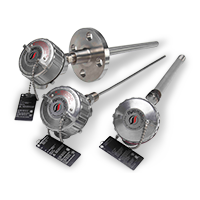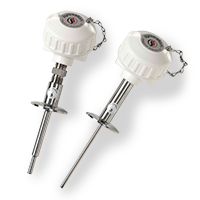Pyromation Temperature Sensors
HOW TO SELECT AND USE THE RIGHT TEMPERATURE SENSOR
If it has to do with process temperature measurement, chances are Pyromation makes a sensor that is ideal for the application. From rugged industrial thermocouples to precisely accurate RTDs, Pyromation has produced temperature sensors for most industrial applications.


RTD’s
Resistance temperature detectors (RTDs), also known as resistance thermometers, accurately sense process temperatures with an excellent degree of repeatability and interchangeability of elements. They provide higher accuracy than thermocouples in their temperature range because platinum is a more stable material than are most thermocouple materials. RTD’s also use standard instrumentation wire to connect to the measurement or control equipment.
Thermocouples
Thermocouples are the most common, convenient, and versatile devices used to measure temperature. They convert units of heat into useable engineering units that serve as input signals for process controllers and recorders. Thermocouples are generally less expensive than RTD’s, they are more durable in high vibration or mechanical shock applications and are usable to higher temperatures. Thermocouples can be made smaller in size than most RTD’s so they can be formed to fit a particular application.
Click here to read more in-depth about selecting and using the right temperature sensor.
WE’RE HERE TO HELP
Pyromation produces a variety of temperature sensors and assemblies in both standard and custom designs. Lakeland is here to help you to find the best solution for your application. Contact us at 855-544-0321 or email us at sales@lakelandengineering.com for more information!